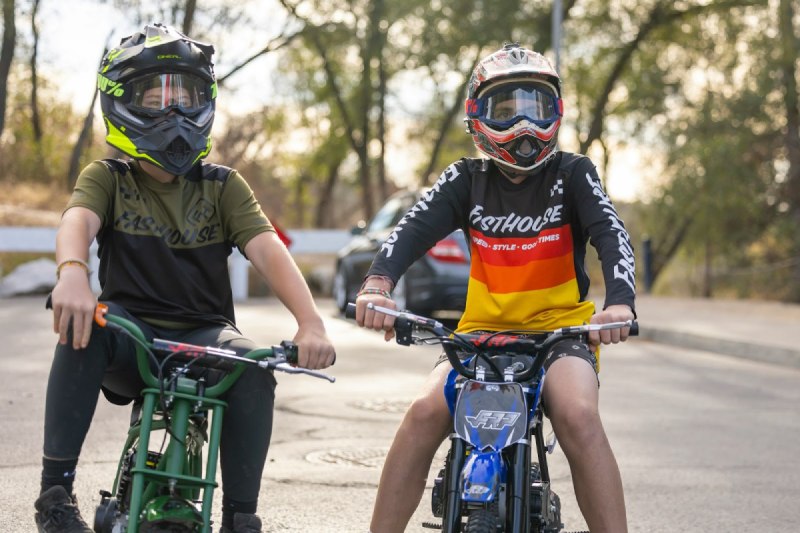Education
Joseph Brvenik on Homeschooling and Motocross: A Perfect Match for Training Flexibility

Balancing a motocross lifestyle with education can be challenging, but homeschooling offers families the tools and flexibility to make it work. As Joseph Brvenik knows all too well, the unconventional schedule of a young rider often conflicts with traditional school routines, creating stress for students and parents. Homeschooling allows students to tailor their learning around training, travel, and competition without sacrificing academic goals.
Beyond flexibility, it also fosters independence, resilience, and growth through real-world experiences and peer connections at races or co-ops. Families can focus on long-term aspirations, whether that’s college or a professional career in motorsports. With the right strategies and mindset, motocross athletes can stay on track both academically and athletically, building a strong foundation for their future.
Supporting an Active and Unconventional Lifestyle
Homeschooling offers the freedom to design a learning schedule that fits around a student’s personal goals and lifestyle. This flexibility is especially helpful for motocross riders who need time during the week for training, travel, and recovery.
Many families turn to homeschooling because it removes the pressure of adhering to a fixed school calendar, allowing more focus on individual interests. A student who trains on weekdays can shift academic work to evenings or lighter travel days without falling behind. This often helps students remain consistent with their learning while staying fully engaged in their sport.
Some motocross families find that homeschooling gives young riders the chance to grow both physically and academically without sacrificing one for the other. With learning tools available at home, on the road, or at the track, students stay on track while pursuing their passion. It creates a lifestyle where education and sport can genuinely complement each other.
Balancing Training Schedules with Academic Freedom
Motocross demands a serious time commitment, with long weekends at races, weekday practice sessions, and occasional travel across states. Traditional school schedules often clash with this rhythm, causing stress for both students and parents trying to juggle it all.
Homeschooling shifts the structure, letting riders complete schoolwork in the early mornings or after practice. Some families design four-day learning routines to leave room for extended race weekends. When academic flexibility matches the pace of motocross, students stay focused without feeling stretched thin.
Learning Anywhere through Mobile Education
With modern technology and creative planning, motocross riders can take their education with them wherever they go. Whether it’s a tablet loaded with assignments or a laptop set up in a camper, learning doesn’t have to pause when the engine starts.
Some families rely on digital curricula that sync across devices, making it easy to complete lessons while waiting for a heat to start. Others pack lightweight workbooks for between races. Even long drives to distant tracks become opportunities to listen to audiobooks or review flashcards. This mobile learning environment encourages students to make use of downtime and stay productive throughout the week.
The ability to learn in unconventional spaces lets students stay consistent with their studies while fully participating in the motocross world. This adaptability is one of the biggest strengths of the homeschool lifestyle. It reinforces the idea that education isn’t confined to a classroom—it can thrive anywhere.
Acquiring Independence
Motocross pushes young athletes to take ownership of their routines, and homeschooling does the same for academics. Together, they encourage habits like time management, self-motivation, and discipline, which are valuable far beyond the classroom or racetrack.
A student who sets daily goals for schoolwork and training begins to understand how effort directly impacts progress. Over time, this independence builds confidence and a sense of responsibility. Parents often notice their child becoming more proactive, not just in learning but in life.
Social Growth Outside Traditional Classrooms
While some assume homeschoolers miss out on peer interaction, motocross communities offer rich opportunities for connection. Riders often form close bonds with teammates and fellow competitors, sharing experiences that create strong friendships.
Beyond the track, many homeschooling families engage in local co-ops, group classes, or volunteer activities. These outlets help students develop communication skills and form social circles. The key is that socialization happens naturally through shared interests, rather than being limited to a single school setting.
Planning Ahead: Long-Term Goals in Education and Sports
Families balancing motocross and homeschooling often keep one eye on the future. Whether aiming for a college scholarship, a trade program, or a professional racing career, they work toward goals with intention and flexibility.
Academic progress is tracked through transcripts, portfolios, and online platforms, making transitions to higher education smoother. Meanwhile, training schedules evolve with a student’s ambitions, ensuring that neither academics nor athletics are neglected. Families often consult with coaches, tutors, and advisors to stay aligned with both racing calendars and academic benchmarks.
Disclaimer: This is a sponsored piece of content. Time Bulletin journalists or editorial staff were not involved in the production or writing of this content.
-

 Business4 weeks ago
Business4 weeks agoArdavon Moayer Explains How Discipline and Teamwork Translate to Sales Wins
-

 Business3 weeks ago
Business3 weeks agoRandy NG: Inside the Process of Managing End-to-End International Trade Operations
-

 Tech2 weeks ago
Tech2 weeks agoFrontier Galvanizing: The Critical Role Of Galvanizing In Renewable Energy And Utility Projects
-

 Education4 weeks ago
Education4 weeks agoForged in Fire: Nicholas Lawless Unveils Lawless Leadership – The Model Built for a World That Traditional Leadership Can’t Survive
-

 Cryptocurrency4 weeks ago
Cryptocurrency4 weeks agoRami Beracha Asks, Can Israel Become A Global Leader In Blockchain Innovation?
-

 Travel2 weeks ago
Travel2 weeks agoMichael Hopkins, Denver: Rethinking the Airport Experience for Modern Travelers
-

 Business4 weeks ago
Business4 weeks agoOPO Group LTD Strengthens Its Global Footprint With Expanding Offices and a Modernized Trading Ecosystem
-

 Tech2 weeks ago
Tech2 weeks agoAI Won’t Replace Storytelling: Nathalie Kyriakou On The Human Side Of Marketing












